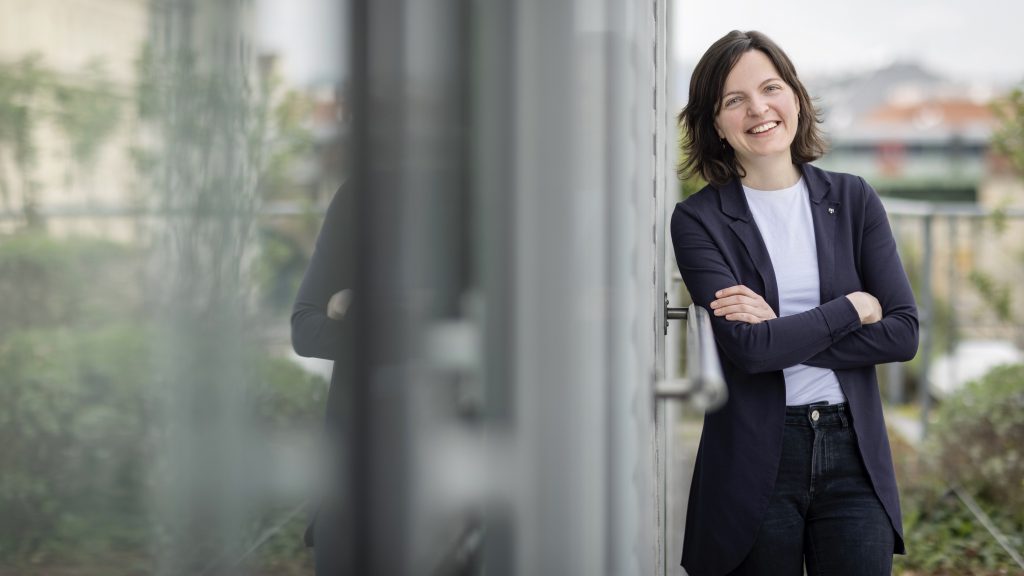ERC Consolidator Grant awarded to Eleni Tomazou at St. Anna Children’s Cancer Research Institute
Dr. Eleni Tomazou, Principal Investigator at St. Anna Children’s Cancer Research Institute (CCRI), wins one of the very hard to get Consolidator Grants of the European Research Council (ERC). In the funded project that was awarded a 2 million euros budget, she aims at nothing less than recreating a childhood bone tumor in her lab. This endeavor has been attempted before, as it would be a major step towards finding a cure for this aggressive disease. However, until today, without success. We asked Tomazou, why it should work out this time.

For certain pediatric bone and soft tissue tumors, namely Ewing sarcomas, survival rates are low and treatment protocols have not improved since decades. “One of the roadblocks towards establishing new therapies is that we do not understand the tumor,” argues Tomazou. Hence, she follows a “build it, to understand it” approach to model this childhood cancer – in order to understand it, and – more importantly – to make it accessible for drug testing.
“Because even if we have an idea for a new therapy, we do not have reliable models to test it on,” explains the researcher. “Cell lines are not representative enough for this tumor. There’s a lot of excitement about patient derived xenograft models and organoids, but even here we lose a lot of information on how the tumor has developed.”
Recipe to model the tumor
In order to build reliable models of Ewing sarcoma, Tomazou takes her scientific hypothesis about the tumor development as a recipe: In contrast to adult cancers that develop over time, pediatric tumors seem to overpower the body’s anti-tumor defenses in a single step of genome rearrangement. “Ewing sarcoma appears to arise when a specific aberrant protein is expressed in cells with permissible state for transformation, and in the right microenvironment,” states Tomazou.
To simulate this process, the scientist differentiates human pluripotent stem cells into many different developmental stages, before she induces the expression of the aberrant protein typical for Ewing sarcoma (termed EWS-FLI1 fusion protein) into those cells. “This creates numerous potential cells of tumor origin and serves as the basis for our model, where we concentrate on three blocks: building the tumor cells (1), their microenvironment (2), and in their in vivo context (3).
“Far from the trial-and-error approach that has often been used for constructing models in the past, cutting edge technology, such as stem cell engineering or CRISPR screening allow us to develop these models in a systematic and biologically interpretable manner”, says Tomazou. “We take this unbiased comprehensive approach trying to make as many cell types as possible and then see if we get models with Ewing sarcoma tumor characteristics.”
High risk, high gain
Receiving an ERC Grant is what every researcher dreams of. “An ERC grant provides all the necessary resources to conduct an ambitious and highly innovative research plan. If it works out, it will really reinvigorate the search for new therapies in this devastating disease,” Tomazou points out. Her scientific idea has prevailed in a very competitive selection process on the basis of excellence as the sole criterion – applied to the evaluation of both the research project and its Principal Investigator.
“We are very proud that Eleni Tomazou was selected for an ERC Consolidator Grant out of 2.222 applicants,” says Prof. Kaan Boztug, MD, Scientific Director of St. Anna CCRI and two-time ERC-grantee himself. “She has been pushing forward her research at our institute since 2012 – and this grant shows that the hard work pays off.” “I am still overwhelmed that I got this grant,” says Tomazou and encourages others to follow their dreams like she did. “If you have a great idea, stick to it and try to make it happen.”
>>Eleni Tomazou research group
>>ERC Grants 2023: List of selected researchers in life sciences, statistics
About ERC:
The ERC, set up by the European Union in 2007, is the premier European funding organization for excellent frontier research. It funds creative researchers of any nationality and age, to run projects based across Europe. The ERC offers four core grant schemes: Starting Grants, Consolidator Grants, Advanced Grants and Synergy Grants. With its additional Proof of Concept Grant scheme, the ERC helps grantees to bridge the gap between their pioneering research and early phases of its commercialization. The ERC is led by an independent governing body, the Scientific Council. Since 1 November 2021, Maria Leptin is the President of the ERC. The overall ERC budget from 2021 to 2027 is more than €16 billion, as part of the Horizon Europe program, under the responsibility of the European Commissioner for Innovation, Research, Culture, Education and Youth, Mariya Gabriel.